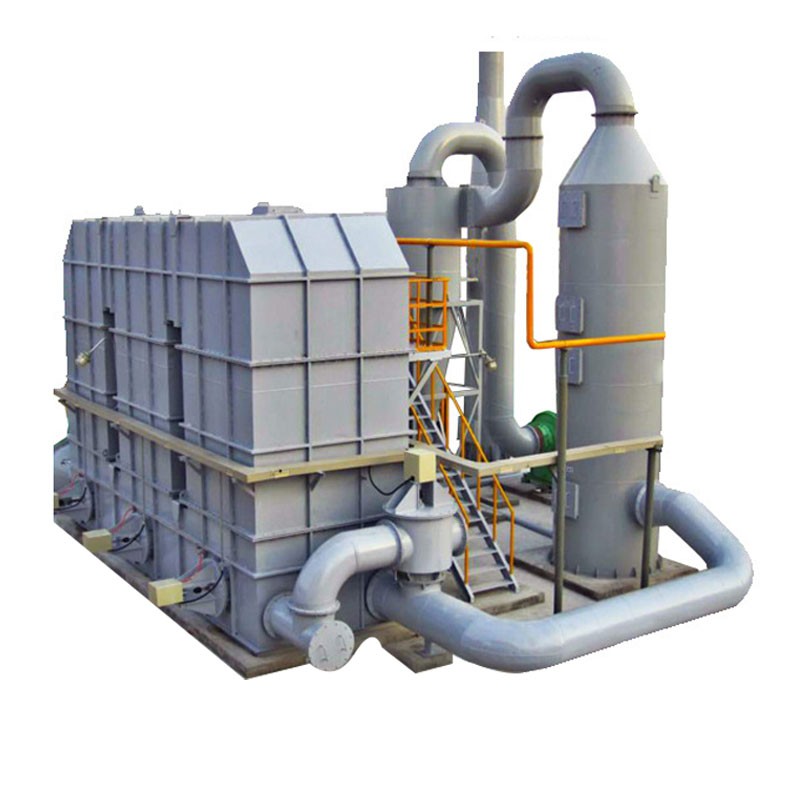As environmental protection becomes a global priority, managing industrial air pollution—especially volatile organic compounds (VOCs)—is a key challenge for modern manufacturing. Harmful gases released during production processes not only threaten human health but also contribute to environmental degradation.
Among the many air purification technologies available today, catalytic combustion (also known as catalytic oxidation) stands out as an efficient and eco-friendly solution. At Chaori Purification, we specialize in designing catalytic oxidation systems tailored to a wide range of industrial emission sources.

Catalytic oxidation is a thermal treatment method in which VOC-laden gases pass over a catalyst bed—typically composed of precious metals such as platinum or palladium—at a relatively low temperature (usually between 200°C–400°C). The catalyst accelerates the chemical reaction, converting harmful gases into non-toxic byproducts, mainly carbon dioxide (CO?) and water vapor (H?O).
1.Pre-Treatment of Exhaust Gas
Before entering the catalytic reactor, exhaust gas is passed through a filtration or pretreatment system to remove dust, tar, oil mist, or other contaminants. This step prevents catalyst poisoning or clogging, ensuring the longevity and performance of the system.
2.Preheating to Ignition Temperature
The incoming gas must be preheated to the catalyst’s ignition threshold. Depending on the application, this can be achieved using electric heaters, heat exchangers, or recovered energy from previous cycles. Once this temperature is reached, the reaction becomes self-sustaining.
3.Catalytic Reaction
As the preheated gas passes through the catalyst bed, VOC molecules undergo oxidation. This exothermic reaction releases substantial heat, further supporting the process and reducing the need for external heating.
4.Heat Recovery
The hot clean gas exiting the reactor is directed through a heat recovery system, such as a plate or tube heat exchanger, to preheat incoming gases—significantly improving energy efficiency.
Low Operating Temperature
Catalytic oxidation requires much lower combustion temperatures than direct thermal oxidation (typically 200–400°C vs. 700–1200°C), which reduces fuel consumption and equipment wear.
High VOC Removal Efficiency
Properly maintained systems consistently achieve VOC removal rates over 98%, meeting even the strictest environmental regulations.
Fast Startup and Stable Operation
Catalytic systems warm up quickly, making them ideal for continuous or batch operations with consistent exhaust volumes. Energy Savings Through Heat Recovery
The system’s exothermic nature allows for integrated heat exchange, reducing the overall energy footprint.
Compact and Modular Design
Catalytic oxidizers can be engineered as compact, skid-mounted units—making them suitable for installation in space-constrained facilities.
Environmentally Friendly
The process produces no secondary pollution—no NO?, no dioxins, and no sludge—unlike some chemical scrubbing methods.
Catalytic combustion is widely used in industries with medium to low VOC concentrations, such as:
It is especially effective for treating exhaust gases containing solvents, alcohols, esters, and hydrocarbons.
Jiangsu Chaori Environmental Protection Equipment Co., Ltd. offers end-to-end catalytic oxidation systems, complete with:
Tailored system design based on gas composition
Contact Chaori Purification today—your expert partner in sustainable exhaust gas treatment.